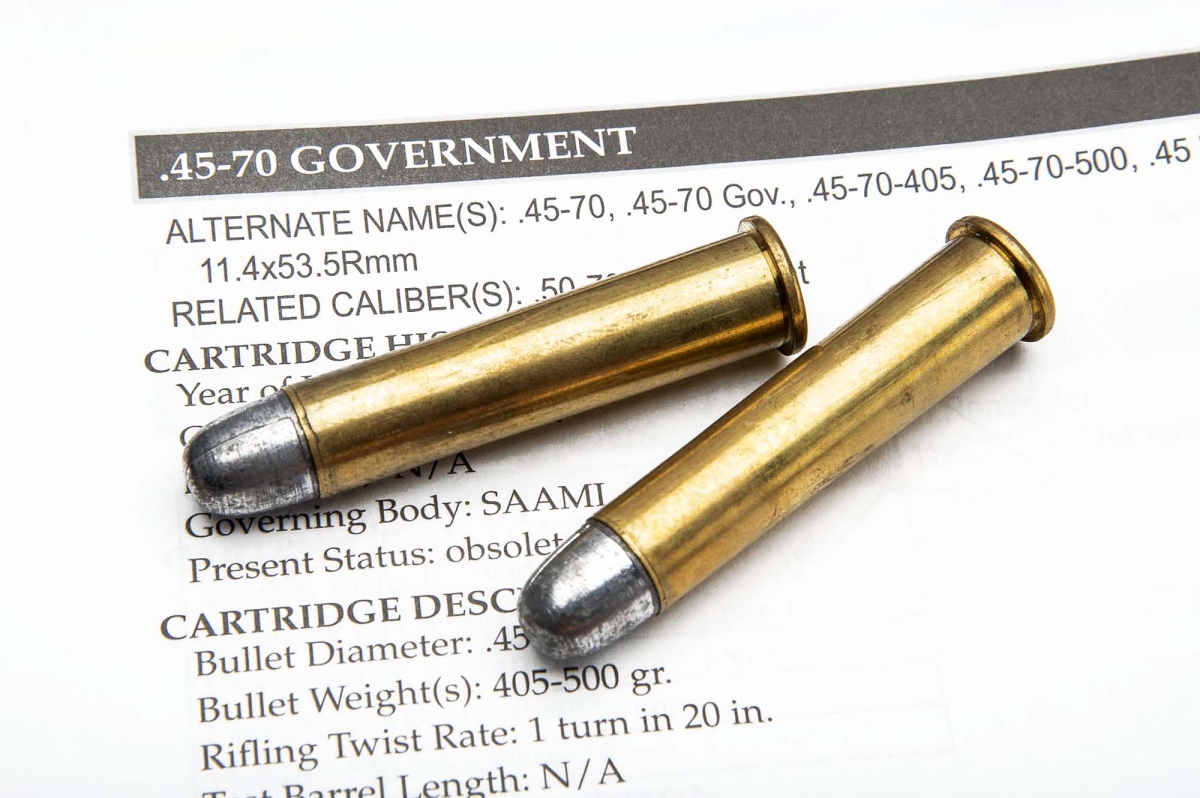Old West guns: meaning of numbers in the names of Black Powder rifle cartridges
Many old black powder cartridges chambered in rifles in use in the American West were commonly named with 2 or 3 consecutive numbers right after the "nominal caliber": let's see what these numbers mean.
45-70, 45-90, 45-120, 44-40… Anyone who is even slightly passionate about Old West guns have at least heard of these historic rifle cartridges, all of them still existing today, used in many modern made replicas of the guns of the American West. But what do the numbers in those cartridges names mean?

An original box of .45-90 caliber cartridges for the Winchester 1886 rifle
Note the "3 numbers" denomination: Caliber - Black Powder Charge - Bullet Weight
Let's start by saying that these were black powder cartridges, loaded with a single type of propellant, which varied its burning speed based only on the grain size, which was the same for all weapons of a certain type.
The first number represents the nominal caliber in hundredths of an inch. The second number represents the nominal load in grains of black powder, even if with bullets of different weight, the load could change slightly.
In the case of the .44-40 cartridge (the .44 WCF - Winchester Center Fire of 1873) it means a bullet with a nominal caliber of .44 hundredths of an inch, loaded with 40 grains of black powder.
Especially with powerfull hunting rifle ammunition, like those popular with Sharps rifles, the denomination may include 3 numbers, indicating Caliber - Black Powder Charge - Bullet Weight. For some a time, this type of denomination with 2 or 3 "talking numbers", remained in use even after the advent of smokeless powder, in this case to indicate the weight of the cordite charge.
When smokeless powders became the standard and began to differentiate, this way of defining ammunition names began to lose its meaning, since depending on the type of powder used and its progressivity, and the type of projectile and desired performance, the powder charges could have very different weights. Other measurements were therefore adopted: for example the length of the case, as with the 9x19 caliber, where the first number is the caliber and the second is the length of the case, both of them expressed in mm.

Some of the most popular Black Powder cartridges used in the 1874 Sharps rifles
And along the years, evocative but arbitrary "marketing" names came into use, such as for the .38 Special, or the .357 Magnum.
These old cartridges today are commonly loaded with smokeless powder, and therefore with loads which are very different from the nominal load of black powder, but the old denomination remains.
It is of course possible for the handloader who wants to do so, or who wants to shoot antique weapons, to load these cartridges using black powder, but it is worth mentioning the fact that modern cases are built differently, with much thicker walls and, above all, a much thicker head, to withstand the much more severe pressures of smokeless powders.
For this reason, modern cases are very unlikely to be able to contain the original load of black powder. This will result in ammunition with slightly lower performance than the originals, which is not necessarily a drawback, particularly if you intend to use them in vintage weapons.




